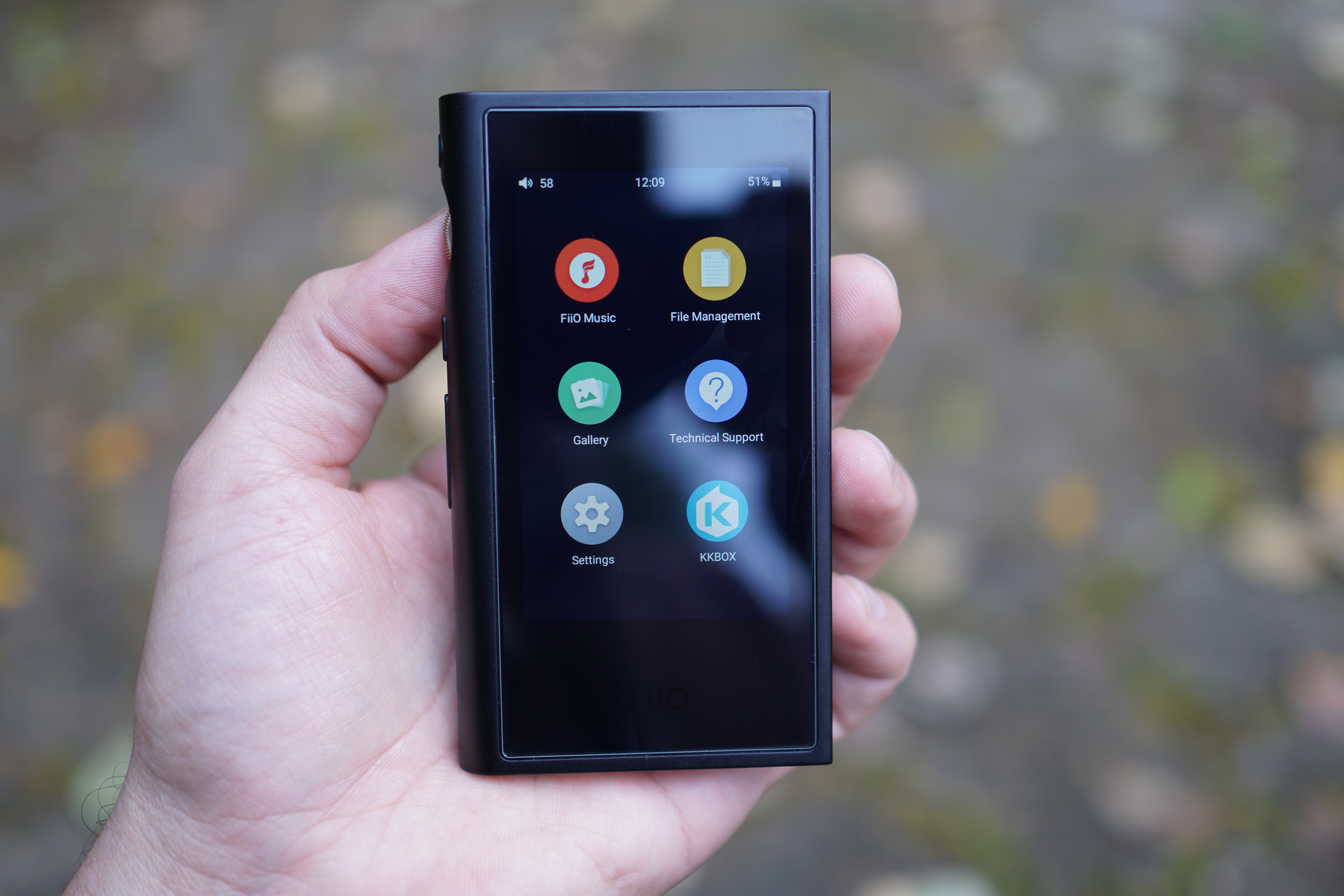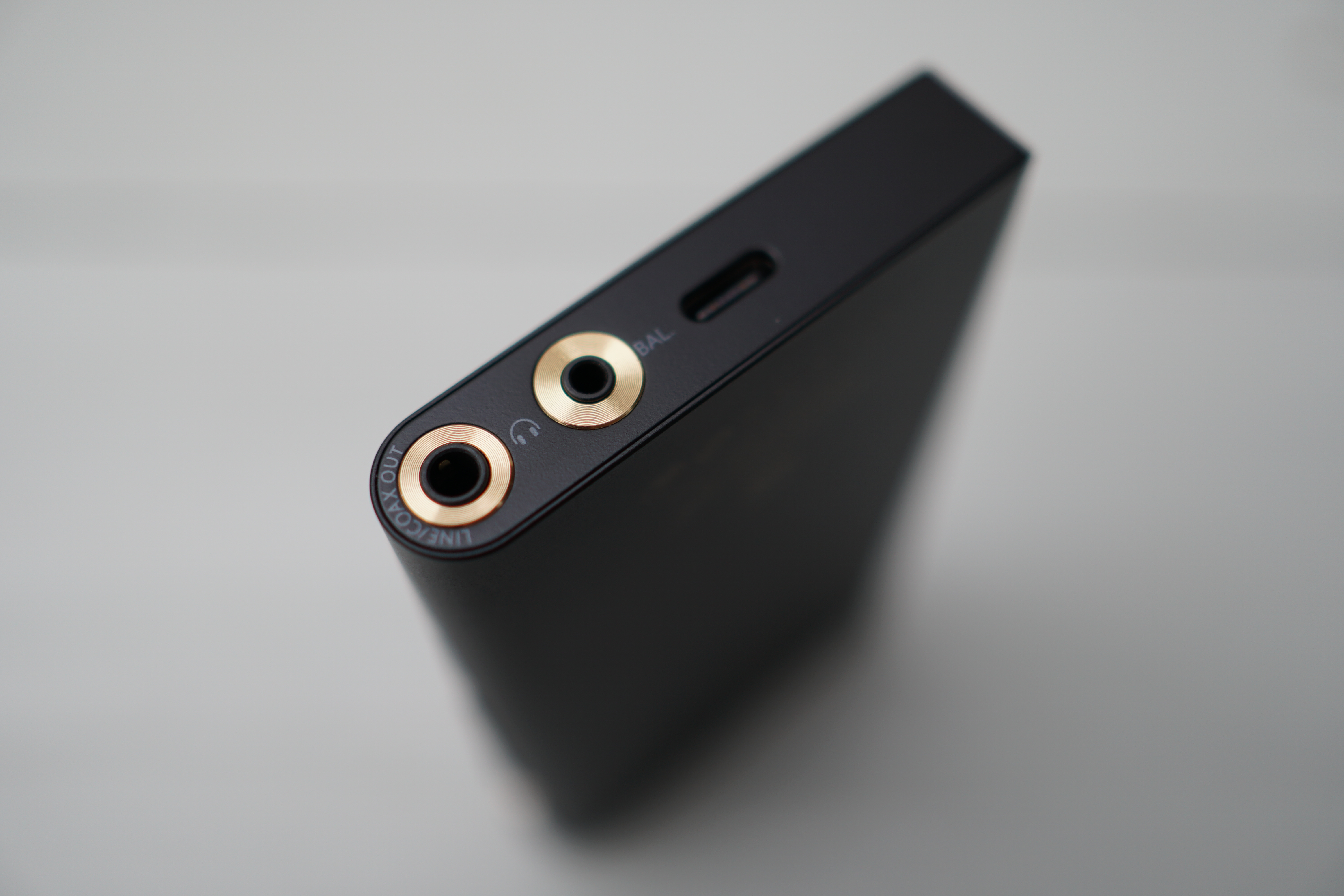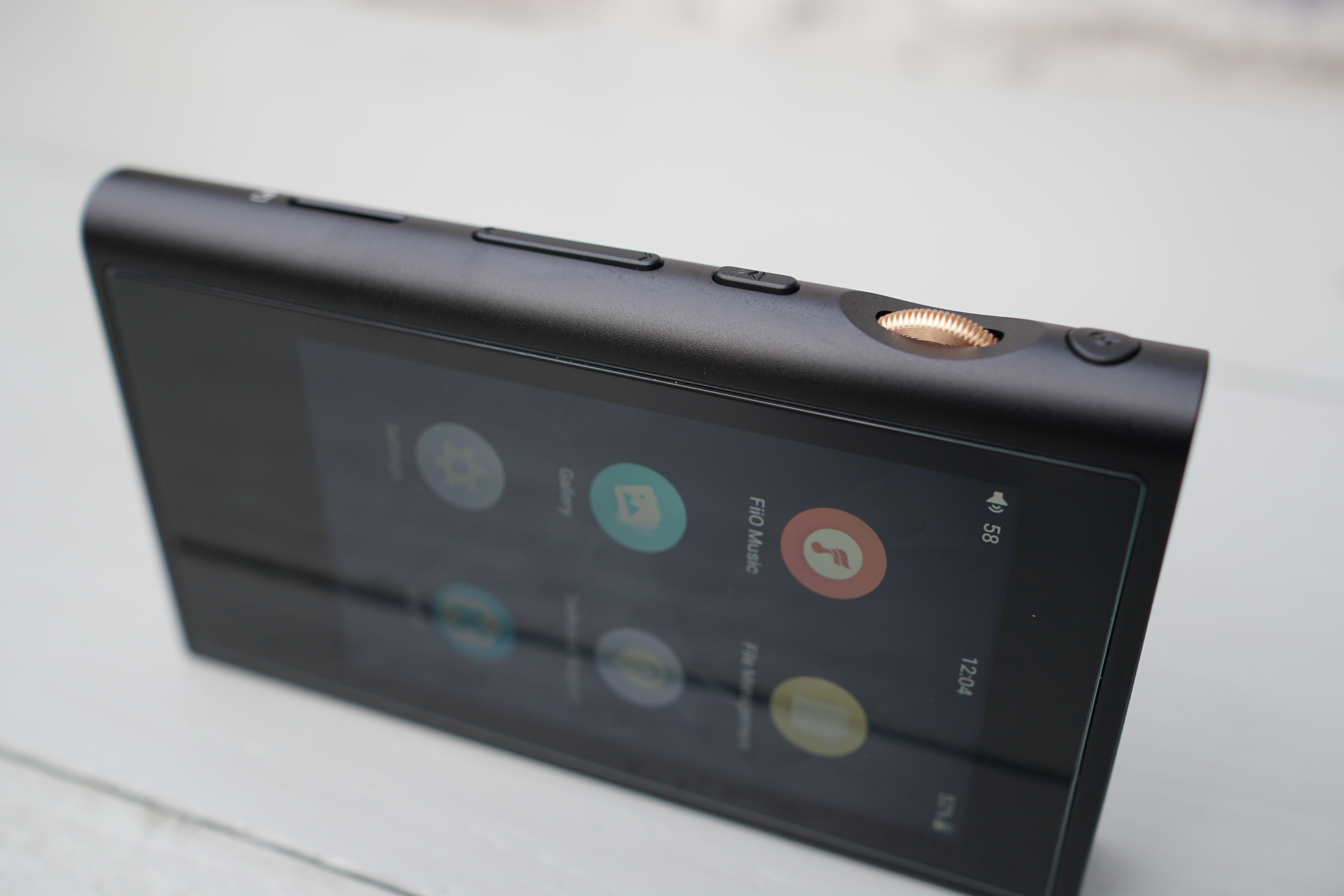
Intro
I have to admit that while I've known about Dunu, the Shenzhen-based
Dunu has gradually climbed its way up the IEM ranks, and with the new launch of the Luna and $1700 asking price, has entered into a serious arena of some of the best earphones on the market. What is it equipped with? A Titanium housing, conceptually-rounded to evoke aspects of the moon (and abstractly, our vehicles used to visit it), and single Beryllium dynamic driver. Note that we're not talking about any of that "Beryllium-coated" nonsense. The diaphragm is a pure, Beryllium (foil), first in its technique of being rolled into form and bonded to a polyurethane suspension (said to be a tough challenge in itself). This synopsis breaks down the keys point to know about the sky-reaching Luna.
The Rundown

> I won't dwell too much on the design, as you can tell in pictures if it's your jazz or not. I'd call the Luna design interesting rather than good-looking. There realistically isn't much outside of a puck-shaped chassis with a concaved cap and stem attached to the side. There is some styling of course, like the asymmetric slope to the cap at a profile view and beveled edges on the stem, but you have to inspect it to notice these details. Just in hand, it can't help but see a silver sweet tart. The concaved cap even makes it feel like one too. Everything is metal and sturdy, which is great, but Fiio is also doing this on much lower-priced earphones. Suffice to say, despite all the moon and spacecraft inspiration in the design, I wouldn't say the design should be significant factor in the buying decision.
> All that said, the Luna's earpieces advantageously have notably small footprints and are lightweight and low-profile. Some mobile audiophiles want a headphone that doesn't draw attention but is refined and feels great in the hand. Luna is this.

The raised slope of the Luna’s conceptual cap reminds me of a crater. Another cool realization is if you look at the cap head-on, it resembles the orbital path profile taken to the moon.

I don’t know if it was intentional, but the cylindrical stem attached to the circular body gives me a Star Trek Enterprise kind of vibe.
> Dunu just passed along a leather pouch with Luna's essential goodies (excluding the retail-included USB-C HiFi DAC dongle and smaller carrying pouch), so I don't have a proper unboxing to display. Luna's set of accessories is impressive on most fronts but the tip variety should have been better (i.e. foam tips).
> The stock cable is standout. It feels like a quality third-party cable you'd buy when the cable that comes in your IEM's box doesn't quite cut it - not too thick, not too thin, ample length, doesn't tangle (numerous strands, so there's a little stiffness to it), and doesn't feel flimsy whatsoever. The kicker is at the termination.



> Cleverly, instead of pack multiple cables in the box to account for our confounded world of port selections, Dunu just includes one balanced cable, with a changeable termination. All the common choices for portables are present: 3.5mm unbalanced, 2.5mm or 4.4mm (pentaconn) balanced, and even 3.5mm balanced for good measure. This is a cool approach that eliminates waste from having to produce multiple cables.
> Fit is terribly important with IEMs. The proficiency of the in-canal seal can make or break an earphone. The Luna is comfortable, and the earpieces don/doff very easily/naturally. The cable stem that sticks out of the circular chassis is positioned perfectly outside the ear and to guide the cable routing around the ear. I'm not generally a fan of memory wiring around the ear, but in this case, it's not thick or stiff and not bothersome whatsoever.


> However, the seal is where there's a lofty concern. The Luna's are a shallow earphone (the amount you can push them in is below average). This will be a contention for a lot of users. Where I usually wear medium tips, I had to go for the largest tips I could find to get an appropriate seal. Even then, it's not a super tight seal. Not going in deep also impacts sound isolation, which was average for me in the case of the Luna's. This is especially since Dunu exclusively uses SpinFit tips for the Luna, which are generally good for fit but poor for isolation. Dunu should have made the nozzles longer to mitigate the shallow fit.
> Fortunately, the Luna's nozzle diameter is standard. I could easily throw on a large pair of Final E tips, which improved bass and isolation compared to the thinner membrane SpinFits.
> Admittedly, the sound quality of the Luna wasn't the easiest for me to assess, or in other words, put my finger on how exactly the sound was great but also why I felt something was lacking. Eventually, after lots of time with the Luna, rotating between different DAC/amps (Chord Mojo, iFi Micro iDSD BL, and Chord Hugo 2) and comparing with another high-end earphones (Shure KSE1200, Sennheiser IE 800, and Shure SE846), I've reached some fair conclusions.

> I hate to start with a negative, but the Luna's somewhat hot treble is the first thing my ears caught, and it did not get better with burn-in (neither brain nor driver burn-in) during my two-week review period. Granted, this will be a YMMV kind of thing. I have ears that pick up on treble peaking, and it's a trait that I've noticed on other closed-back, highly-resolving headphones I've reviewed in the past - the RHA CL2 Planar in-ears and Focal Stellia over-ears (which also use a Beryllium driver), as well as my daily driver KSE1200 electrostatic in-ears.
> If one isn't careful with tuning and push the driver too far, you'll get an unnatural, metallic quality to your treble, resulting in sounds that can be described as shrill, scratchy, or thin. In my experience, the RHA CL2 are the biggest culprit of this. The Focal Stellia just has a hint of metallic-ness in the treble but no where near unacceptable. My personal KSE1200 IEMs can be called bright and treble prominent, but Shure did a great job to keep it more natural than metallic-sounding. So where does the Luna stand? It'd pit it right between the CL2 and Stellia - not unacceptably harsh like the CL2 but treading a little too close. For instance, higher frequency vocals inescapably have a scratchy tssssss to them. I stress that my ears pick up on this, where yours may not. I'd say in this respect, the Luna played better with my Mojo than Hugo 2.

The iFi Micro iDSD BL is a great source for the Luna. It sharpens up some of the smoothness while giving it lots of space to breathe. The Micro iDSD BL’s treble can sound a bit sharp with some of my headphones, but somehow it doesn’t emphasize the Luna’s treble peaking.
> Another aspect I struggled with was impact. I might sound crazy, but the Luna have slam while also being delicate at the same time. I struggled with how to describe this for a while. The bass is large, like a rolly, encompassing bubble when really called on by the track, but it never really hits hard. It's almost like it starts to and doesn't follow completely through. What I may be describing is a lack of punch. This isn't to say the frequency range dips or the detail isn't there, nor is it a lack of decay. These technicalities are satisfactory on the Luna, and the pleasant warmth from being a dynamic driver certainly shows. My critique feels backwards, because I hear the mid-bass as stronger than the sub-bass (measurements even show this), but somehow it's missing the punch that I feel should be there.
> The transition from bass to mid-range is excellently cohesive. A strong quality of the Luna is how airy and filled-out it sounds throughout, and this is especially appreciated in the mids. There's a slight dip in the upper mids that is noticeable but in no way distracting. Via my Hugo 2, I realized a standout ability of the Luna to display macro details, like spatial definition and layering, so effortlessly. Actually, a/b'ing with my SE846 IEMs makes the SE846 sound 2D in comparison, which is not how I would have ever described them. The SE846 has a wider stage no doubt, but the Luna most certainly works within an evenly spaced bubble around you. Although I love a wide stage, I personally prefer an even presentation. It feels more natural.

The warmth and smooth treble of the Mojo made this pairing my favorite.
> As touched on, macro details are fantastic with the Luna. I think I can say it's the best thing about these IEMs. When dynamics and dimensionality are both handled excellently, it does a lot for the listening experience. This is amplified by the Luna's clear and effortless instrument separation and articulation. This aspect pushes the listener to just fall into the music than analyze it.
> Micro details on the other hand (which to me means qualities like pronounced note articulation/extension, small audible nuances, brilliance, and decay) are just above-average - not quite as pristine and resolving as I'd picture a beryllium dynamic driver being. The Luna's reproduction sounds smoothened as a whole, which makes for a pleasant listen but doesn't have that crisp, pin-drop detail that many audiophiles may look for from an advanced driver. It may be a taste decision from Dunu, because the Focal Stellia as I remember was sounded sharper. Furthermore, when I switch from the Luna to my KSE1200, it's like a veil is lifted, and I can hear ever little detail so clearly where they were subtle with the Luna. This isn't to say that I would describe the Luna as veiled or not resolving. It shows more detail than other dynamic driver IEMs I've used, but it's no where near as resolving as an electrostat (not that many earphones are; the mention is a reference on performance).
Conclusion

I feel like I've been hard on the Luna. It's a really good IEM - cohesive, engaging, above-averagely detailed, and pleasant-sounding, with no critical flaw to speak of. The treble is pushed a little far, but even with a treble sensitive person like me, I can still listen to it and enjoy. Its smooth, warm, tonally-proper, encompassing, dynamic, separated, and articulated sound is hard to argue with and I imagine will work for a lot of audiophiles that want to just enjoy music as much as they want to pick it apart.
However, at $1700, you have to be more than just a really good IEM. Where the Luna stands out is its macro capabilities. With the right DAC, you'll be given a very fun, encompassing experience, which not many IEMs at this price point can rival. Is this enough for the large price tag? That'll be up to you to decide.

































































